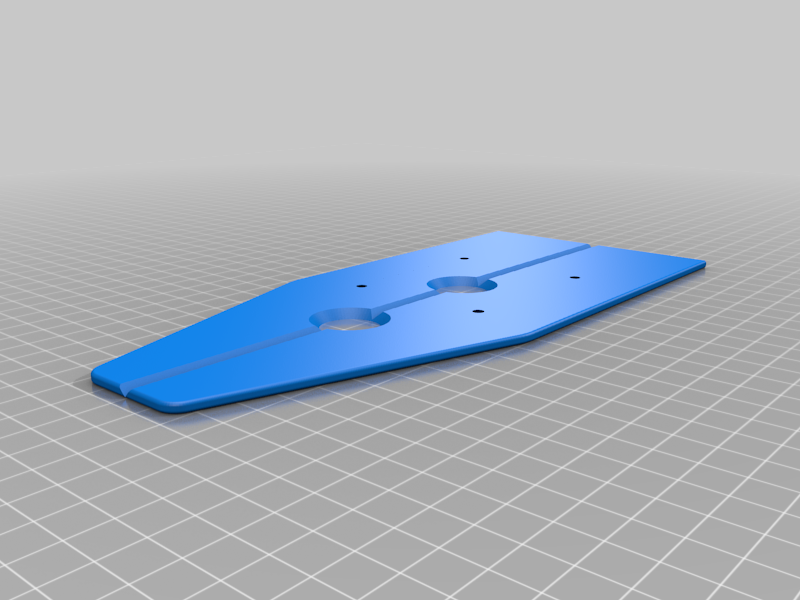
Pinball Cabinet Leg Protectors
thingiverse
These leg protectors are much like the ones you would buy online or print from other 3D models, but with a few extra perks. These should be universally compatible with any standard pinball cabinet. First, these are designed to print flat, then fold along a "living hinge". This allows both planes of the protector to be printed as large flat layers with maximum layer adhesion instead of the second plane rising above the print bed in narrow layers with a small surface for layer adhesion. In other words, both planes of the protector are equally (and considerably) strong. The hinge itself will not stand up to constant flexion, but the idea is that you flex it once, gently, right before you install it. Second, these include screw holes that will allow you to screw them into the cabinet. - This will keep them from sliding up after installation, dragging your side art along with them and warping/stretching/wrinkling the vinyl or scratching the paint. - They also make it so you don't have to fumble with the protectors while mounting/removing the legs. It will even hold them in place during travel! - It will further reduce long-term strain put on the living hinge. - Be sure to select a screw size such that the length won't penetrate through the cabinet and splinter the inside of the wood, and also such that the head of the screw fits completely within the countersink hole; it shouldn't protrude above the surface of the protector when installed. We recommend #6 x 1/2" wood screws with flat/countersunk heads. In order to prevent any splitting in the cabinet, you should probably drill pilot holes (use a 3/32" drill bit for #6 screws, and apply tape at 1/2" from the tip for a depth guide). - Use of the screw holes is completely optional and you can simply leave them unpopulated if you don't wish to use them. They will be completely covered by the leg and invisible. Third, we've included a short version. This serves several purposes: - This is sized to match the rear of most WPC cabinets, where the legs attach at a lower point relative to the base of the cabinet. This way you won't have a bunch of extra protector hanging down below the cabinet as with normal off the shelf protectors. - Because the legs veer away from the cabinet after the mounting surface, you can use these on the front, too, if you wish. Why? Well maybe you want to save on filament. Maybe you have a smaller print surface on your printer and the full length ones won't fit. Either way, this gives you options. We recommend printing this as follows: - ABS filament, for durability. PLA may work fine, too, but ABS is going to be more rigid and hold up to heavier use. PETG may also work, but we suspect it's flexibility may cause it to give too much under compression or when the game is being nudged, leading to failure, but this could be avoided with higher infill density. - 30% grid infill. Grid infill has the highest compressive strength based on a few studies we found. You definitely don't want to use any infill pattern that doesn't stack 100% on top of the previous layer's infill (such as a gyroid, cubic, or octet pattern). We'll have to get more long-term use out of our first set before we can really say if 30% is sufficient, but we suspect it will be. Can't go wrong with 100%, though, if you want to play it safe. - 0.2mm layer thickness. The living hinge is 0.4mm thick, so the layer thickness needs to divide evenly into that. You could use 0.1mm layers, we suppose, but 0.2mm works great and will print in half the time. 0.3mm is "right out". :P - Ensure your infill is at at 45 degree angle to the long axis of the protector and that it alternates by 90 degrees for each layer. In other words, the two layers that will make up the hinge should crisscross diagonally across the hinge's axis of flexion. If any layer is parallel, the hinge will split that layer apart when you flex it. If it's perpendicular, the filament has to stretch farther and may also split. We tested all three and diagonal, by far, worked the best to hold up to the initial folding process.
With this file you will be able to print Pinball Cabinet Leg Protectors with your 3D printer. Click on the button and save the file on your computer to work, edit or customize your design. You can also find more 3D designs for printers on Pinball Cabinet Leg Protectors.
